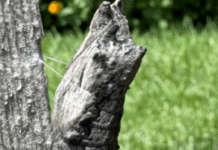Don’t get carried away fertilizing your cool season lawn! For lawns, the total annual nitrogen requirement is generally applied in doses of 1 pound of N per 1,000 square feet.
Occasionally, as little as one half pound, or as much as 1 1/2 pounds may be applied at one time. Applying the N in 1-pound doses supplies the lawn with a reasonable amount of N when it will be most beneficial.
In general, turfgrasses should be fertilized when they are actively growing. So cool-season grasses, such as Tall fescue, Kentucky bluegrass, and perennial ryegrass, should be fertilized primarily in the fall and May. Warm-season grasses (bermudagrass, buffalograss and zoysiagrass being examples) should be fertilized in late spring and/or summer.
For cool-season lawns, most of the fertilizer should be applied in the fall. Therefore, fescue, bluegrass and ryegrass benefit most from fall-applied nitrogen applications.
September is the most important time. N applied during September helps thicken the stand, and encourages development of a healthy root system. A November application (at about the time of the final mowing of the season) helps the turf build food reserves. This enables the lawn to green up earlier in the spring, with- out encouraging the excessive shoot growth that often accompanies early spring N applications.
This emphasis on fall fertilization may seem strange, especially since some garden centers and stores vigorously promote their fertilizer products in the spring. But cool-season lawns characteristically experience a flush of shoot growth sometime in mid- spring. Applying N before this flush is over can cause the grass to grow too fast. The shoot growth exhausts the plant´s food stocks, and leaves it with little in reserve for the stressful summer ahead. So it is best to wait until the flush of shoot growth is over, normally early in May, before making spring-applications of N.
Ideally, a slowly available N source would be used for the May application. This encourages moderate, controlled growth as the hot summer weather approaches.
If a late June or early July application is deemed necessary, use a slow-release N source and keep rates on the low side. Excessive N during the summer can lead to disease problems for cool-season grasses.
The moral of this lawn fertilizing story is: for fescue lawns, fall fertilizing – not spring – is better for the health of the grass and don´t fertilize warm season grasses too early (summer exclusively). Only weeds get the best benefit of spring fertilizing!



